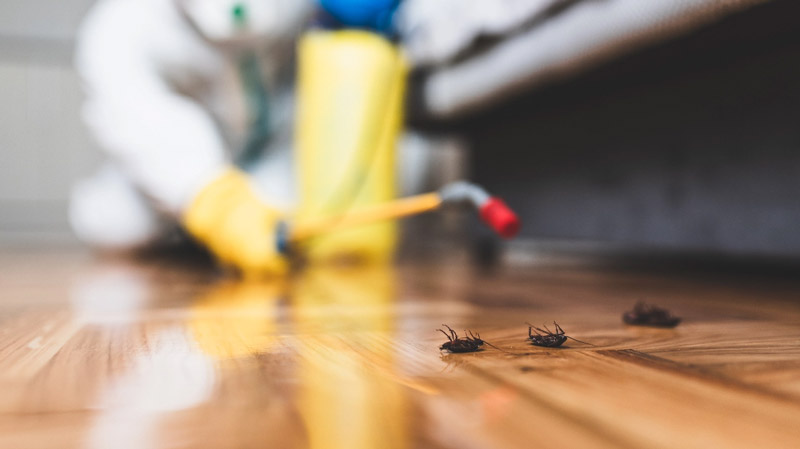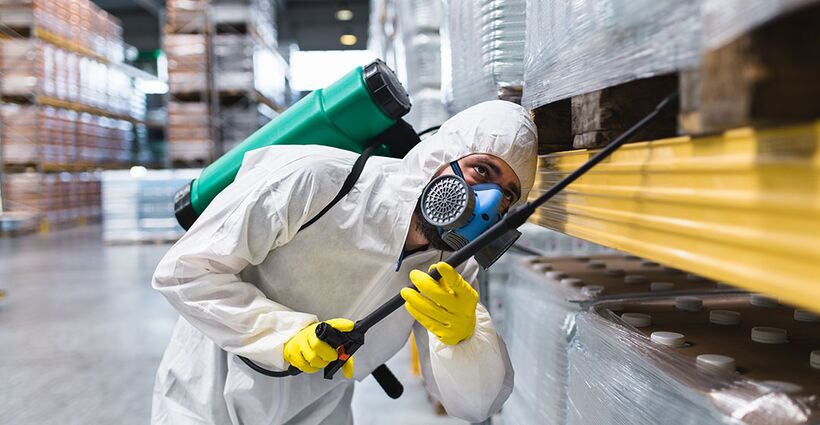Discovering Infestation and Treatment Approaches in the World of Bug Control
The landscape of parasite control incorporates a myriad of difficulties, particularly as problems of usual family pests continue to develop. By integrating preventive actions with advanced monitoring techniques, such as Integrated Bug Management (IPM), house owners can better secure their environments.

Usual House Vermin
When it pertains to managing our space, comprehending typical family bugs is critical. These bugs not only interrupt our convenience but can also present health risks and damage residential property. One of the most widespread household parasites consist of ants, cockroaches, rodents, termites, and bed insects.
Ants, usually seen foraging in kitchen areas, can pollute food and establish huge nests. Roaches, known for their durability, can activate allergic reactions and spread microorganisms. Rats, including computer mice and rats, can trigger architectural damage and bring diseases like hantavirus and salmonella. Termites, often described as "silent destroyers," can compromise the integrity of wooden structures, causing expensive repairs. Bed bugs, although not condition carriers, can create significant discomfort through their bites and cause psychological distress.
Acknowledging the signs of these parasites, such as droppings, nests, or attack marks, is important for early intervention (Pest Control Lockhart). Proper cleanliness practices, sealing entry points, and preserving a clutter-free setting work preventative procedures. By determining these common family pests and recognizing their actions, house owners can take positive steps to minimize infestations, ensuring a healthier living environment
Comprehending Parasite Infestations
Pest infestations can intensify swiftly, turning a small annoyance into a significant trouble if not attended to without delay. Common factors adding to invasions consist of poor hygiene, structural susceptabilities, and seasonal modifications that drive insects indoors.
Recognizing the sort of pest is important, as various types exhibit different habits and reproductive rates. For circumstances, rats may establish nests in covert locations while pests like roaches flourish in wet environments. Early discovery commonly depends upon identifying signs such as droppings, nibble marks, or uncommon sounds, which can suggest a problem prior to it ends up being extreme.
Environmental problems likewise play an essential function in pest proliferation. Warm, humid environments can promote the rapid growth of bug populaces, while adjustments in landscaping or building can inadvertently create helpful environments. Normal assessments and preventative actions are paramount to minimizing the risk of invasions. An educated approach to recognizing these characteristics prepares for reliable parasite monitoring approaches in the future.
Therapy Methods and Strategies
Effective therapy techniques and methods are vital for reducing pest problems and bring back a safe setting. A complex technique is frequently best, including chemical, organic, and mechanical methods tailored to the particular bug and the seriousness of the invasion.
Chemical therapies consist of the use of insecticides and herbicides, which can successfully get rid of parasites. Nonetheless, appropriate application and adherence to security standards are crucial to minimize threats to people and non-target microorganisms. Integrated Insect Administration (IPM) motivates the sensible use chemicals as a last hope, depending rather on tracking and threshold degrees to determine intervention requirements.
Biological control methods entail presenting natural killers or parasites to lower pest populations. This strategy is progressively popular, specifically in farming setups, as it promotes ecological sustainability.
Mechanical approaches, such as catches and barriers, give instant alleviation from parasites without presenting chemicals. Alternatives consist of sticky traps for bugs or physical obstacles for rats.
Ultimately, the option of therapy technique ought to think about the particular insect, the atmosphere, and prospective effect on human health and ecological communities. A balanced combination of these strategies can properly take care of problems while promoting long-lasting bug control remedies.
Safety Nets for Homes
Proactively resolving insect problems before they rise is essential for keeping a healthy home environment (Pest Control Lockhart). Carrying out efficient preventative actions can significantly minimize the chance of infestations, ultimately protecting both your property and well-being

Correct landscaping also plays a vital role in avoidance. Keeping shrubs and trees cut away from your home decreases the opportunities of insects finding their means inside your home. Furthermore, make certain that drainage systems are operating effectively to stop standing water, which can attract mosquitoes and other insects.
Last but not least, regular inspections are recommended. Routinely looking for signs of insect task permits early intervention. By taking on these safety nets, house owners can create a setting that is much less hospitable to parasites, consequently enhancing their overall high quality of life and lowering the requirement for extensive parasite control treatments.
Business Insect Control Methods
An extensive method you can look here to business pest control is vital for organizations intending to maintain a safe and hygienic atmosphere. Efficient methods entail a combination of normal assessments, employee training, and the implementation of Integrated Parasite Management (IPM) techniques.
Routine assessments allow early detection of pest task, enabling prompt intervention. Organizations must establish a regular timetable for these assessments, concentrating on high-risk locations such as kitchens, storeroom, and garbage disposal websites. Employee training is just as critical; personnel should be educated on the indications of parasite infestations and the relevance of reporting them immediately.
Executing IPM methods helps minimize parasite issues sustainably. This includes environment modification, such as sealing entrance factors and minimizing clutter, in addition to employing all-natural deterrents prior to resorting to chemical therapies.

Furthermore, teaming up with a qualified insect control supplier makes certain accessibility to expert understanding and advanced therapy options. This collaboration can lead to customized bug control intends customized to the details needs of business, reducing dangers and improving general efficacy. Eventually, a proactive and enlightened view it now method promotes a pest-free environment, securing both public wellness and business online reputation.
Conclusion
In final thought, efficient pest control demands an extensive understanding of typical family pests and their actions, paired with targeted therapy methods. Carrying out preventative steps along with therapy techniques such as Integrated Bug Monitoring and organic control enhances the capacity to mitigate infestations.